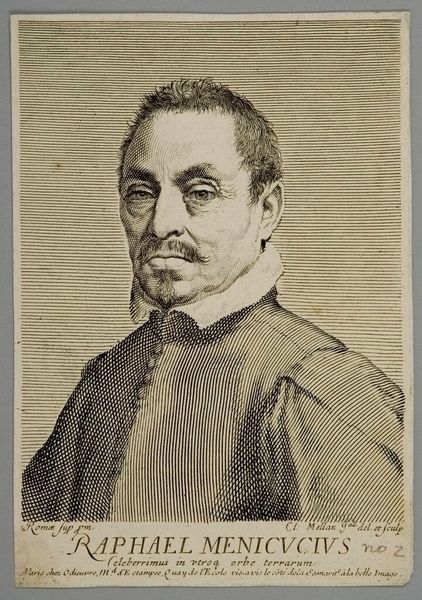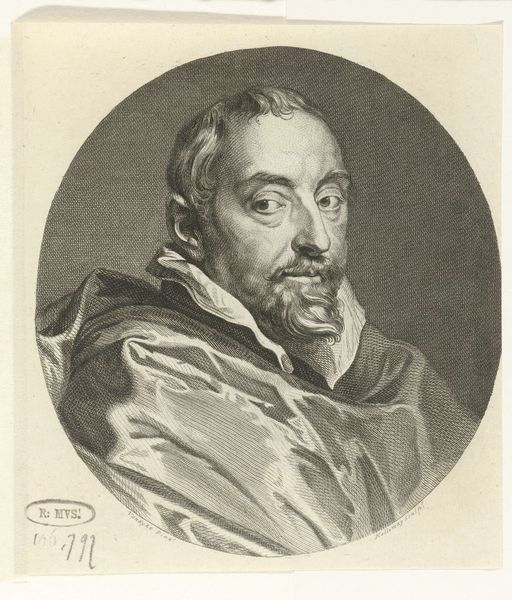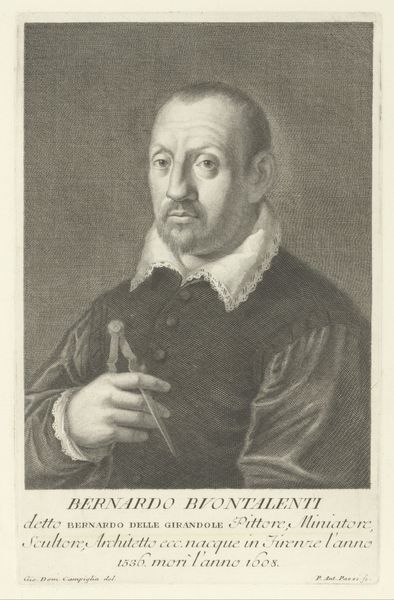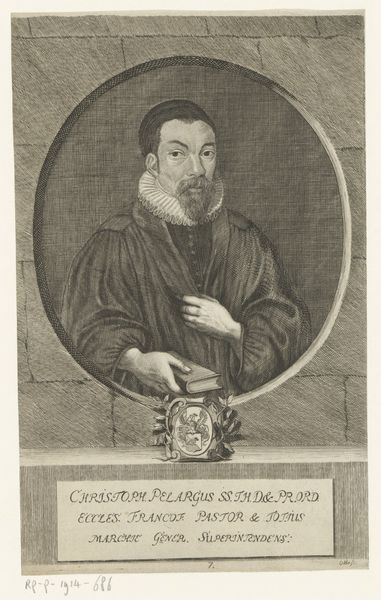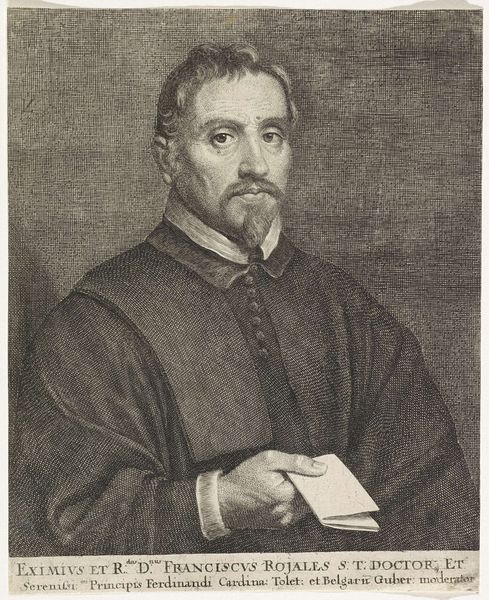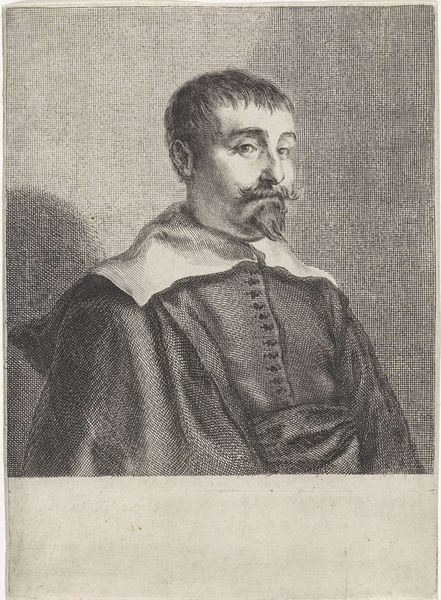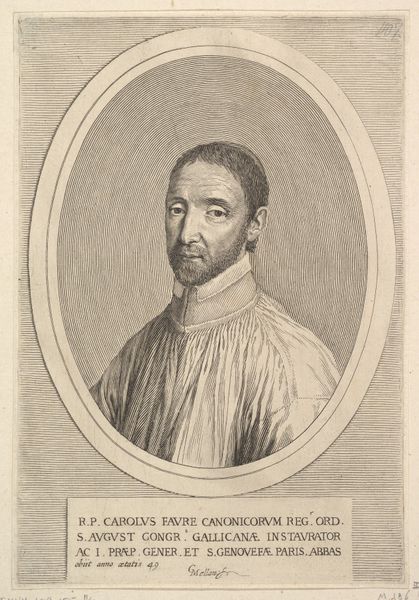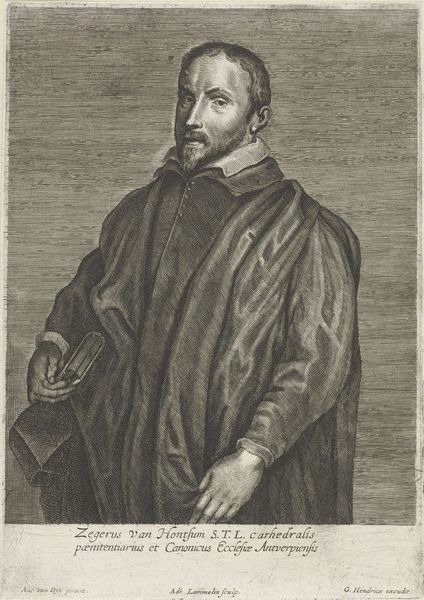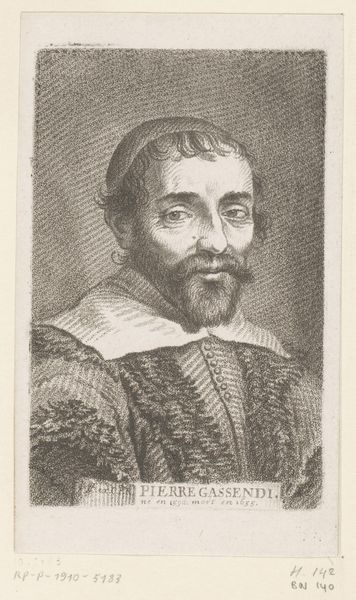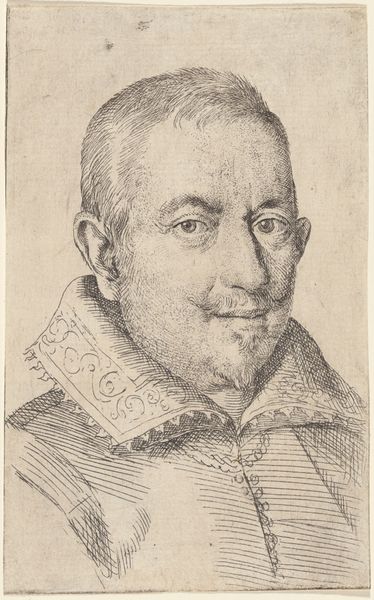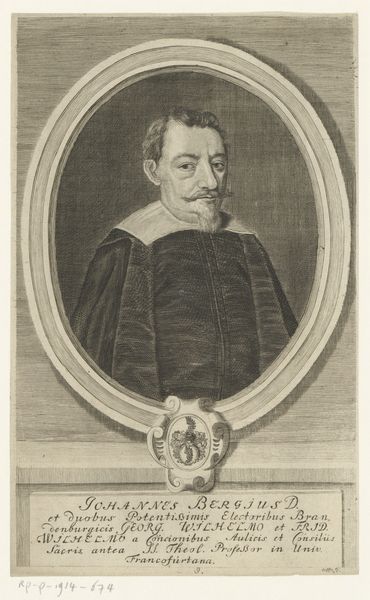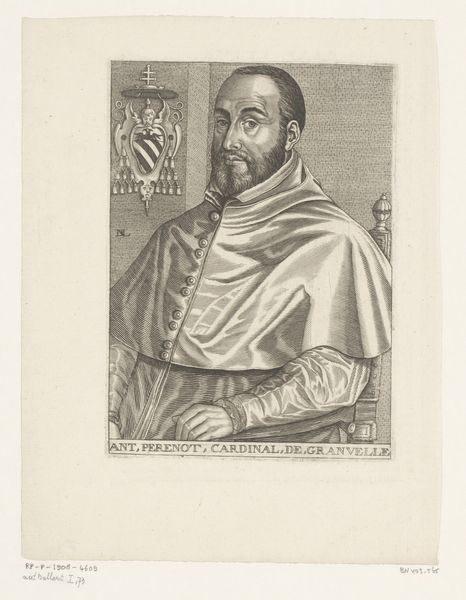
drawing, print, engraving
#
portrait
#
drawing
#
baroque
# print
#
figuration
#
portrait reference
#
men
#
line
#
portrait drawing
#
history-painting
#
engraving
Dimensions: sheet: 5 7/8 x 4 1/8 in. (15 x 10.5 cm) plate: 5 13/16 x 4 in. (14.7 x 10.1 cm)
Copyright: Public Domain
Editor: This is Claude Mellan's engraving of Raffaello Menicucci, dating from between 1624 and 1636. The thing that immediately grabs me is the incredible detail achieved with what appears to be a single, continuous line. What's most striking to you about this piece? Curator: The relentless line work, it’s practically a feat of endurance when we consider the labor invested in its production. The very act of engraving—the precise control and the physical effort required to incise the copperplate—speaks to a society where skilled craft was highly valued, before the age of mechanical reproduction truly took hold. It’s not just about representation; it's about the social context of production, who was commissioning these engravings, and for what purposes? Were these widely circulated? Editor: That’s interesting. I hadn't really considered the printmaking process as part of the art itself, more just a means to an end. Curator: Exactly. Think about the materials involved: the copperplate, the ink, the paper. Where did they come from? How were they traded? And how does the dissemination of this image contribute to the shaping of Menicucci's reputation? It's all interconnected. Editor: So you’re saying that understanding the means of production gives us a better understanding of the art itself and the world it came from? Curator: Precisely. It pushes us beyond mere aesthetics and forces us to confront the socioeconomic realities that gave rise to the image. This portrait isn’t just a likeness; it’s a material object embedded in a complex network of production and consumption. Editor: I see. I will remember to think about that more often. Curator: Hopefully, this perspective will alter the way you interpret artistic materials.
Comments
No comments
Be the first to comment and join the conversation on the ultimate creative platform.
